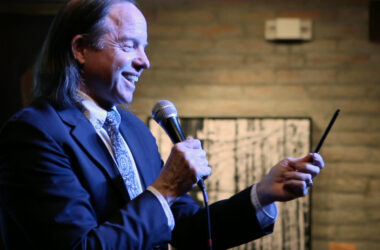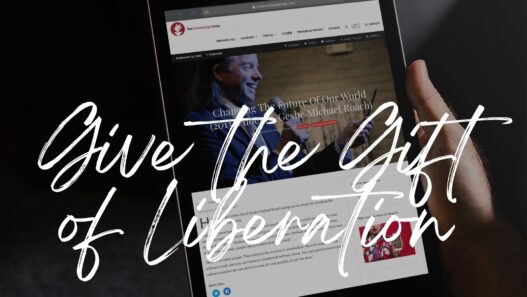Class 14: Contact with the Outside
[su_icon icon=”icon: link” color=”#ff1259″ size=”20″ shape_size=”12″ url=”https://youtu.be/pPO-hpdS1Ek?t=6s” target=”blank”]Video[/su_icon]Hi, welcome back to the Wheel of Life home retreat. Today my translator is Allison Zhou. Thank you for coming. Session fourteen is called “Contact with the Outside.” And the image we’re using is a bunch of kids looking out a window with a telescope. And this kind of represents all the parts of your mind making their first contact with the outside.
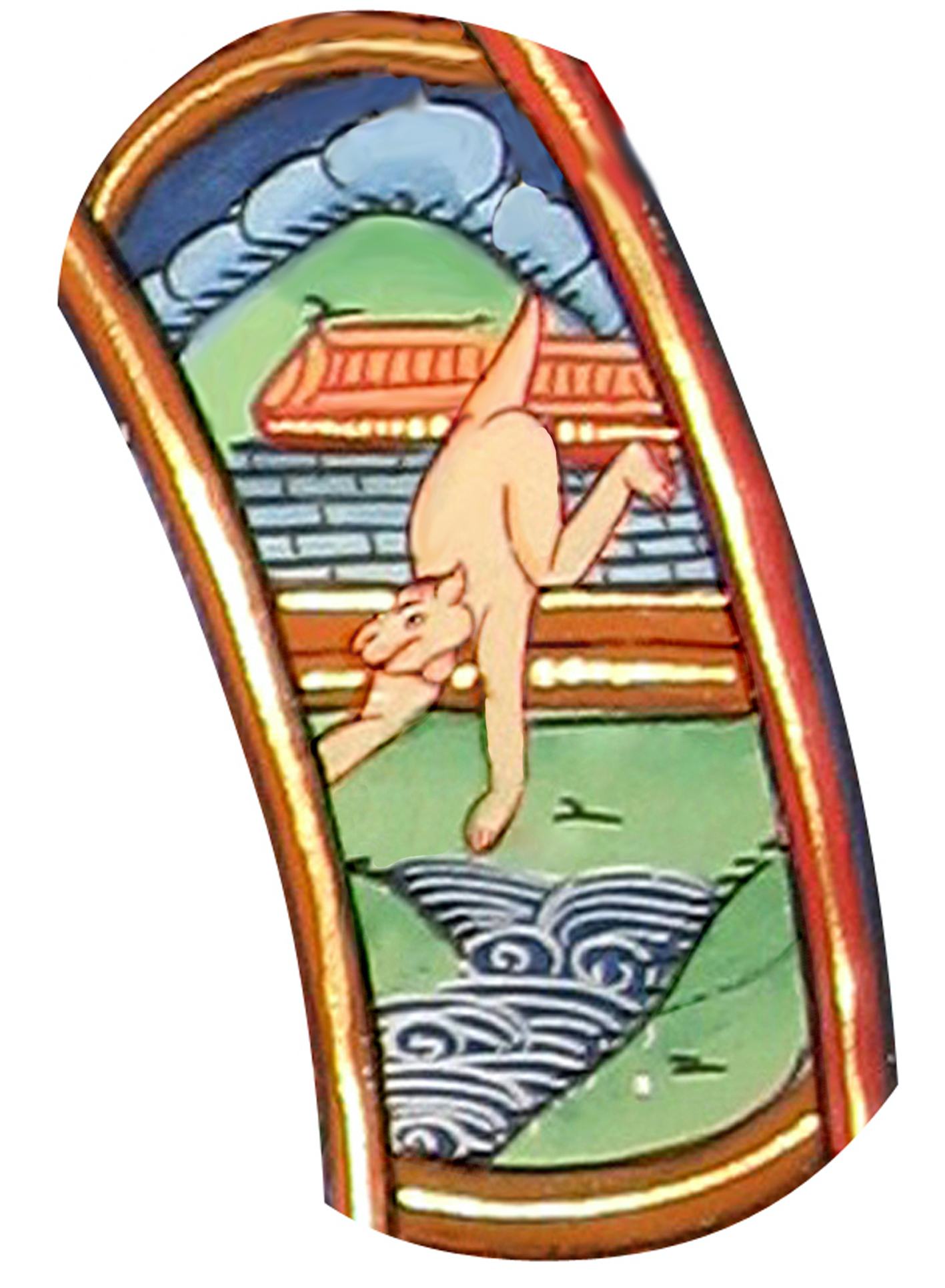 So, where have we come in the Wheel of Life so far? We have link number one: you misunderstand your husband, you say, “I didn’t do anything—he yelled at me!” Then step number two: you make karma because you don’t understand him. “I’m not stupid, you’re stupid!” Then that karma is impressed onto the mind. You carry that mind to your next life, it enters the womb—it enters the blood and the semen. In Tibetan, it’s called the blood and the semen. And I’ve been calling it menstrual blood and semen, but of course we understand—now that we have microscopes—that it’s really the semen and the seed of the mother, which is in the blood.
So, where have we come in the Wheel of Life so far? We have link number one: you misunderstand your husband, you say, “I didn’t do anything—he yelled at me!” Then step number two: you make karma because you don’t understand him. “I’m not stupid, you’re stupid!” Then that karma is impressed onto the mind. You carry that mind to your next life, it enters the womb—it enters the blood and the semen. In Tibetan, it’s called the blood and the semen. And I’ve been calling it menstrual blood and semen, but of course we understand—now that we have microscopes—that it’s really the semen and the seed of the mother, which is in the blood.
Okay, then the mind enters that substance—those substances—at link number three, which is called “consciousness,” and it’s the monkey entering the womb. Link number three, which is called “consciousness,” but it’s the monkey entering the womb. And then we talked already about link number four, which is basically your body and your mind developing inside the womb.
[su_icon icon=”icon: link” color=”#ff1259″ size=”20″ shape_size=”12″ url=”https://youtu.be/pPO-hpdS1Ek?t=2m49s” target=”blank”]Video[/su_icon]And now we reach link number five. Don’t forget why we are learning all of these links— these are the steps in the process that trigger each other. And they’re how we get in trouble. If you’re in this Wheel, you are having trouble in your life—you will live and you will die. And the goal of learning all these links, is to learn how to stop them. It doesn’t mean we disappear. Nirvana doesn’t mean you disappear; it just means your life changes into a perfect life where you cannot die and you cannot get old.
Okay, so we’ve reached link number five. In Tibetan, it’s called ngapa kye che (LNGA PA SKYE MCHED). And what it means is the “[five] doors of sense.” Let’s go to the text: ngapa kye che kyi tendrel ni (LNGA PA SKYE MCHED KYI RTEN ‘BREL NI) So what is the link that we call number five? And these are the organs of sense. mik na sok kyi kye che druk druppa ne sung (MIG RNA SOGS KYI SKYE MCHED DRUG GRUB PA NAS BZUNG). So this link goes from the time that your instruments for experiencing the world are developing, like your eye, and your ear.
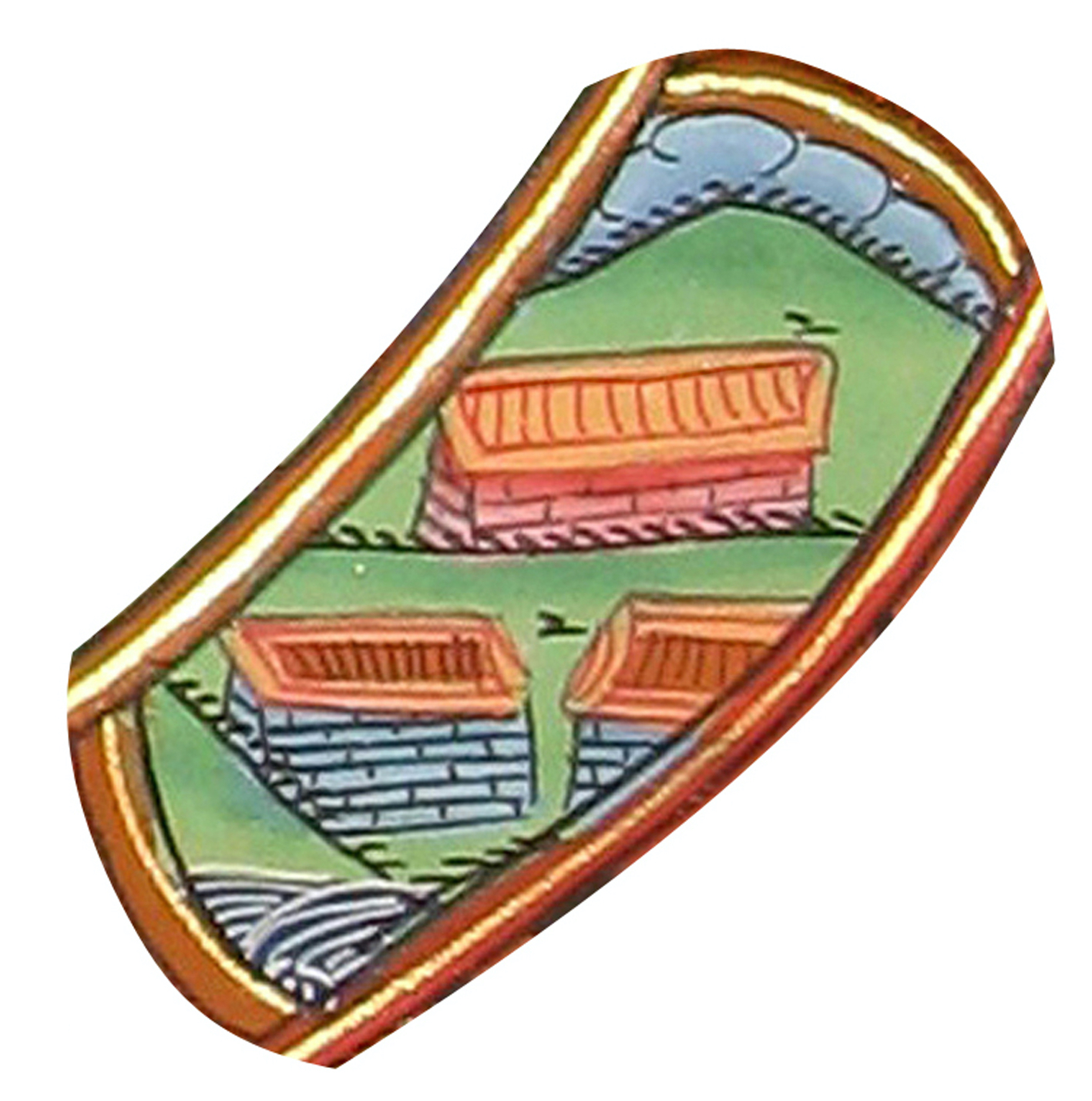 So it’s like the Heart Sutra: mik me, nawa med, na me, che me, lu me, yi me, suk me (MIG MED, RNA BA MED, SNA MED, LCE MED, LUS MED, YID MED, GZUGS MED) It goes: eyes, ears, nose, tongue, skin, and then mind. So your mind is also one of your sense organs. Okay, so he says “six sense organs” here. So once you have an eye, you can start to experience the outside world. That experience begins when the eye meets the object, which meets the mind behind the eye. Those three things. So, so far, we aren’t yet able to experience the details of the object. We do have an eye, we do have a nose, we do have an ear, but they are like empty houses, and that’s the image in the link here. Nobody’s looking out the window yet. So first, those sense faculties have to develop, and then you can look out through them.
So it’s like the Heart Sutra: mik me, nawa med, na me, che me, lu me, yi me, suk me (MIG MED, RNA BA MED, SNA MED, LCE MED, LUS MED, YID MED, GZUGS MED) It goes: eyes, ears, nose, tongue, skin, and then mind. So your mind is also one of your sense organs. Okay, so he says “six sense organs” here. So once you have an eye, you can start to experience the outside world. That experience begins when the eye meets the object, which meets the mind behind the eye. Those three things. So, so far, we aren’t yet able to experience the details of the object. We do have an eye, we do have a nose, we do have an ear, but they are like empty houses, and that’s the image in the link here. Nobody’s looking out the window yet. So first, those sense faculties have to develop, and then you can look out through them.
lu dang yi kyi wangpo ni mer merpoy kap ne yupar sung (LUS DANG YID KYI DBANG PO NI MER MER PO’I SKABS NAS YOD PAR GSUNGS,)—it is stated that even from the time that your consciousness enters that messy blood and semen, you don’t yet have eyes. But traditionally, they say from that first few minutes inside your mom, when your mind enters those liquids, you do have this sense power of thought and you do have a kind of skin—it’s just scum right now.
dzu kye tabur kam okma nyi su ming suk kyi tendrel dang, kye che kyi tendrel chik char du drup (RDZUS SKYES LTA BUR KHAMS ‘OG MA GNYIS SU MING GZUGS KYI RTEN ‘BREL DANG, SKYE MCHED KYI RTEN ‘BREL CIG CAR DU ‘GRUB,) Now there’s a special kind of birth in Buddhism, and certain special people are just born in a second, complete—inside a lotus for example. Like this big … and then in one second, they’re like “pop” and they’re a whole person. So in the lower two realms—desire realm and form—they say that the name and form … the two parts of body and mind, in the womb—the two parts: body and mind, inside the womb. And this link, which is number five—link number five, your sense organs—if you are born miraculously, those all happen at the same time. So there’s no distinction between the body in the womb and the body outside the womb.
suk me la ming gi tendrel dang, yi kyi kye che kyi tendrel tsam le suk dang ky che suk chen ngay tendrel med (GZUGS MED LA MING GI RTEN ‘BREL DANG, YID KYI SKYE MCHED KYI RTEN ‘BREL TZAM LAS GZUGS DANG SKYE MCHED GZUGS CAN LNGA’I RTEN ‘BREL MED)—when you’re talking about a person who is being born into the formless realm, they don’t have the name of ‘name and form,” because the name… I’m sorry … I’m sorry … they don’t have the form part; they just have the name part—just a mental part. yid kyi kye che kyi tendrel (YIK KYI SKYE MCHED KYI RTEN ‘BREL)—they have the sense organ of the thought, but they don’t have the others—the other five: the eyes, and ears, and nose…
[su_icon icon=”icon: link” color=”#ff1259″ size=”20″ shape_size=”12″ url=”https://youtu.be/pPO-hpdS1Ek?t=9m42s” target=”blank”]Video[/su_icon]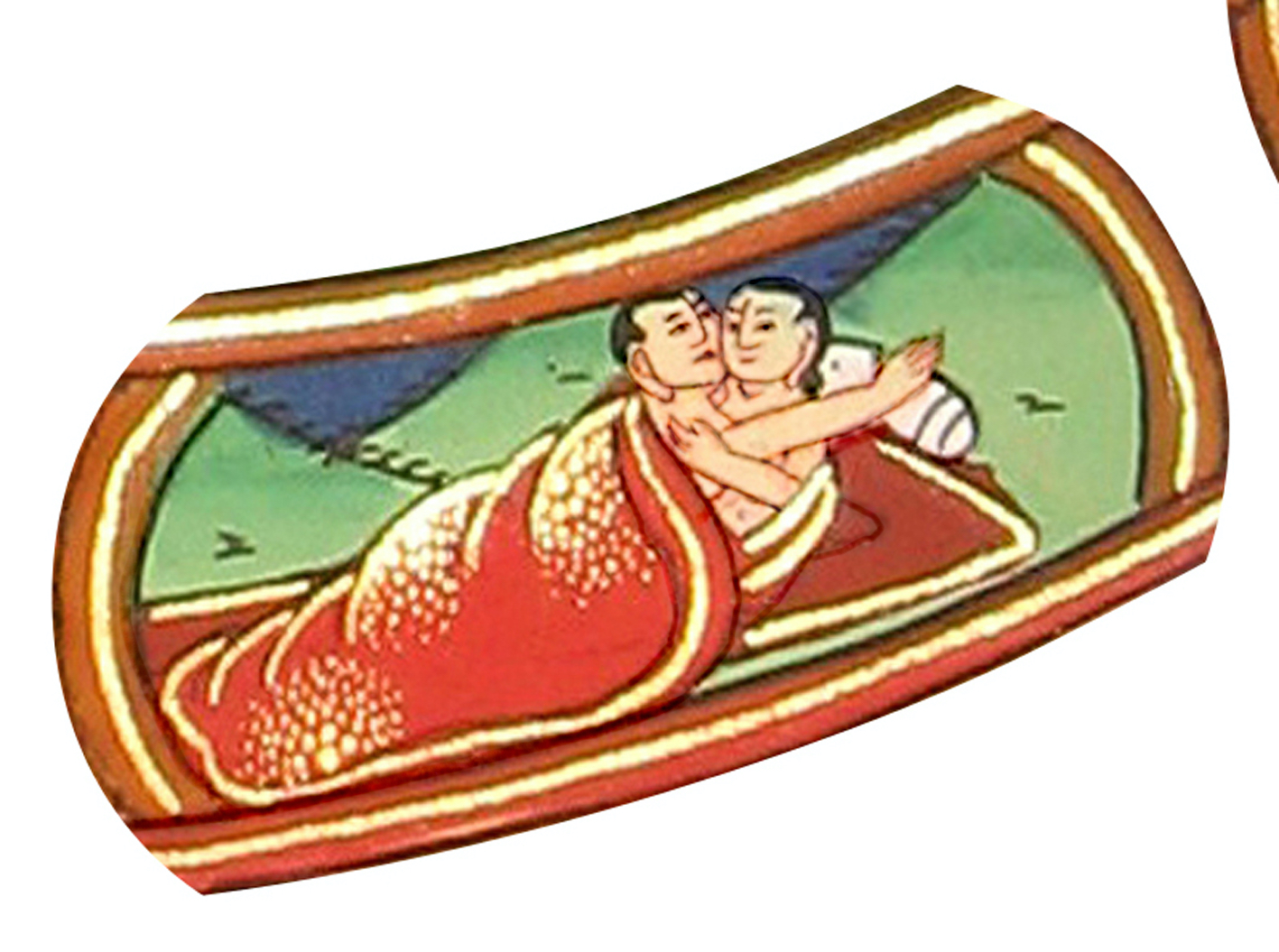 That finishes his presentation of the sense organs. nga pa kye che Yeah, the bù fen (部份) of number five. Okay, link number six we’ve reached, which is called “contact.” And here’s the description … it’s not very long. By the way, the image is a man touching a woman, and this link does not refer to sex or something like that—it’s a different kind of contact. So the painting is just a metaphor. drukpa rekpa ni (DRUG PA REG PA NI)—link number six is called “contact.” So now the sense organs have formed and three things make contact.
That finishes his presentation of the sense organs. nga pa kye che Yeah, the bù fen (部份) of number five. Okay, link number six we’ve reached, which is called “contact.” And here’s the description … it’s not very long. By the way, the image is a man touching a woman, and this link does not refer to sex or something like that—it’s a different kind of contact. So the painting is just a metaphor. drukpa rekpa ni (DRUG PA REG PA NI)—link number six is called “contact.” So now the sense organs have formed and three things make contact.
Okay, here’s your eye, for example—the eye power. Then here’s a red apple, and then here’s the awareness of the red apple. So when the eye sees the red, and the mind is aware of the red, when these three make contact, we call it “contact.” So here in the text it says: yul wangpo namshe sum tre (YUL DBANG PO RNAM SHES GSUM ‘PHRAD). The object (the red apple), the sense power (the eye), and the awareness (of the red apple), they meet each other and that’s called “contact.” Okay, after contact … then, how should we say … by the way, during contact… sorry … I’m going to change that. That contact up to the time that you are able to distinguish, “Oh, this is something nice, this is not something nice,” that period of contact has been made, but you’re not feeling anything yet. That link is called number six, “contact.”
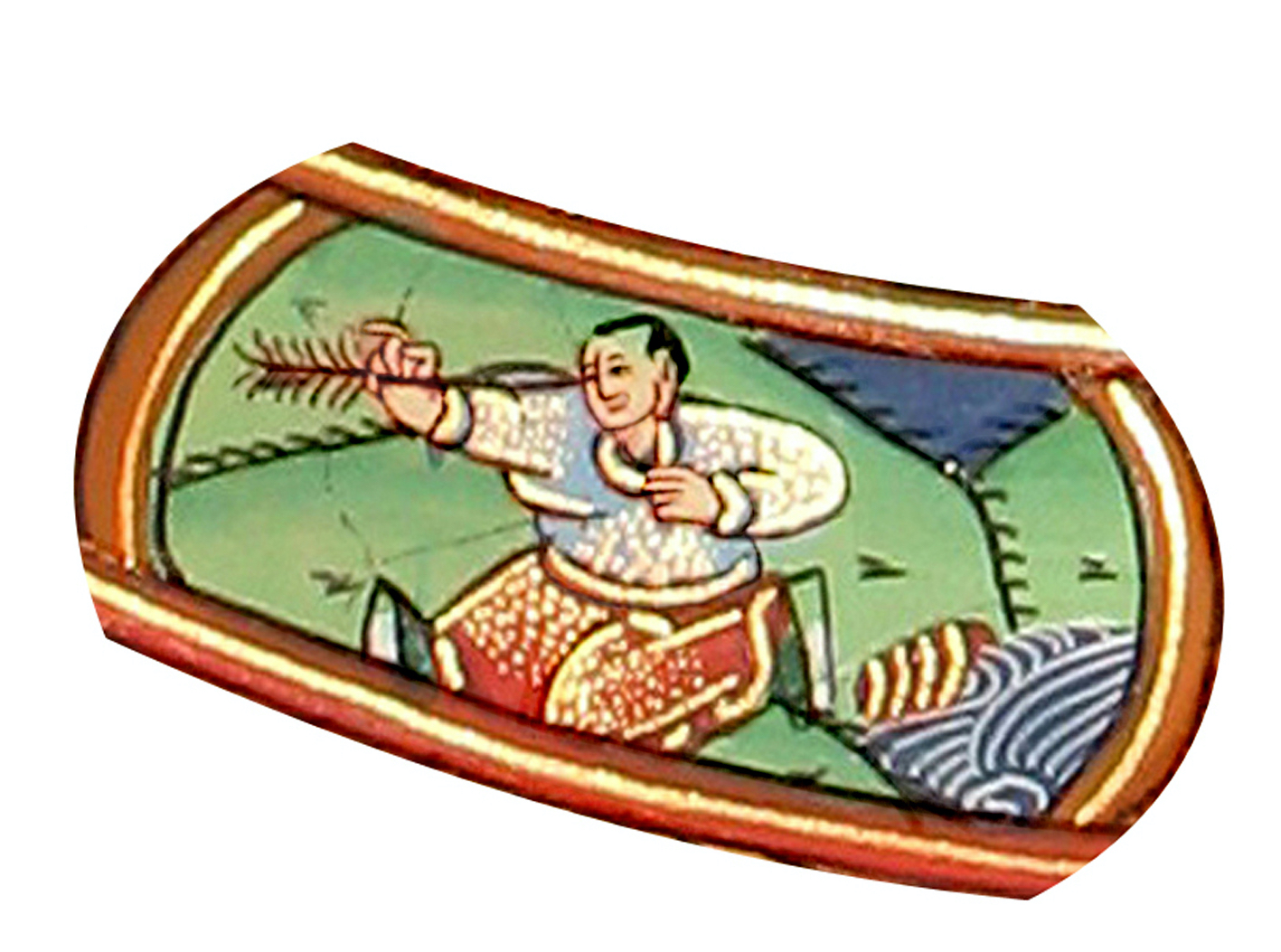 Okay, now that causes number seven. Link number seven, which is called dunpa tsorwa (BDUN PA TSOR BA). dunpa (BDUN PA) means link number “seven,” tsorwa (TSOR BA) means “feelings.” Here’s the definition: dunpa tsor ba ni rekpay kyen gyi tsowar de duk tang nyom sum chi rik kyewa te (REG PA’I RKYEN GYIS TSOR BA BDE SDUG BTANG SNYOMS GSUM CI RIGS SKYE BA STE)—Because the mind, and the sense power, and the object make contact, then you can start to say, “Oh, I like apples,” or, “I’m allergic to apples.” And you can feel happy or you can feel sad, and that’s called “feeling”. The traditional picture is a very terrible kind of feeling—the man has an arrow in his eye, and it’s just an extreme example of feeling. Of course, he’s feeling intense pain.
Okay, now that causes number seven. Link number seven, which is called dunpa tsorwa (BDUN PA TSOR BA). dunpa (BDUN PA) means link number “seven,” tsorwa (TSOR BA) means “feelings.” Here’s the definition: dunpa tsor ba ni rekpay kyen gyi tsowar de duk tang nyom sum chi rik kyewa te (REG PA’I RKYEN GYIS TSOR BA BDE SDUG BTANG SNYOMS GSUM CI RIGS SKYE BA STE)—Because the mind, and the sense power, and the object make contact, then you can start to say, “Oh, I like apples,” or, “I’m allergic to apples.” And you can feel happy or you can feel sad, and that’s called “feeling”. The traditional picture is a very terrible kind of feeling—the man has an arrow in his eye, and it’s just an extreme example of feeling. Of course, he’s feeling intense pain.
Now what kinds of feeling are there? de duk tang nyom (BDE SDUG BTANG SNYOMS). de (BDE) means a “nice feeling.” duk (SDUG) means duk ngel (SDUG BSNGAL) means “pain.” tang nyom (BTANG SNYOMS) means
“I don’t feel good, I don’t feel bad”—just “neutral feeling. chi rik kyewa te (CI RIGS SKYE BA STE)—as soon as there is contact, one of those feelings will come up. Now usually we would say, “How are you feeling?” In English we say, “Well, I’m not feeling anything right now.” “I don’t enjoy this thing, I don’t dislike this thing—I’m just kind of not feeling anything right now.” But in Buddhist philosophy, you are always feeling something.
The feeling might be neutral, but you are still having a feeling. Once there’s contact with the outside world, or even hearing your own thoughts, you will start to feel something. And one of the kinds of suffering in this world is that you cannot turn those feelings off. When I first started to teach in New York, maybe 35 years ago, I used to interview every student. And I didn’t have time, I used to interview them—because I was working full-time at the diamond business—so I would meet people at lunchtime. And I distinctly remember meeting this person. It was on Fifth Avenue, and we had lunch together. And I said, “What do you do for a living?” And he said, “I steal things—I’m a robber.” Then suddenly I got nervous, I started holding my phone like… I said, “Oh … oh, really?” “Yeah, I break into people’s houses.” I’m surprised. I said, “Well, why do you do that?”
He said “I’m a heroin addict.” Then I was like, “What?” He said, “I’m a heroin addict. I shoot heroin. I need money.” Then I’m thinking, “Oh, this guy cannot come into our school, he will steal everything.” But something came in my mind. I said, “I never tried heroin.” I said, “Why do you do that? Why do you take heroin?” He said, “I want to stop feeling things. I don’t care if it’s a good feeling or a bad feeling, I don’t want any feeling. I don’t want to kill myself, because I’m afraid—I don’t know what will happen. But I’m tired of feeling things, it’s too much for me. Just after I take the heroin, then for an hour or two hours, I don’t feel anything.”
[su_icon icon=”icon: link” color=”#ff1259″ size=”20″ shape_size=”12″ url=”https://youtu.be/pPO-hpdS1Ek?t=18m00s” target=”blank”]Video[/su_icon]Actually, so what we have to say, according to this, he is feeling things. It’s neutral feeling. We are always feeling, and that’s one of the sufferings of the Wheel of Life. You cannot stop feeling. My little brother committed suicide. And he was very intelligent, he was strong, and handsome … twenty years old. But he said, “I just want to stop feeling.” And he killed himself. Now unfortunately, in the Wheel of Life even if you shoot the brain, which he did, you cannot stop the life—the mind is still alive. And the mind will not die, and the mind will go to another place, and it will go through another circle, and you will have feeling—it won’t stop for one second.
So we need to find another way out of the Wheel. And that’s why we are studying the Wheel. So we’ll see you again in session fifteen. We’re going to find out … so after you plant the seed, what makes the seed start growing?
[Allison]: Start or stop? [Geshe Michael]: Start. And we’re going to talk about that in session fifteen.See you then.







